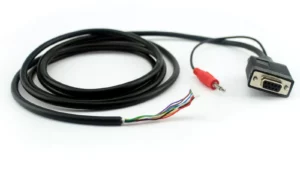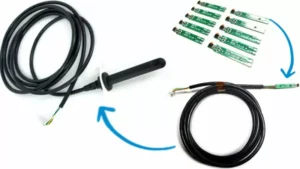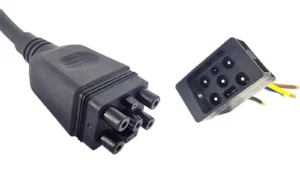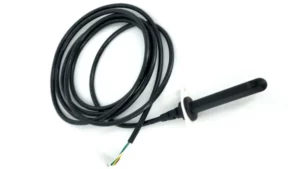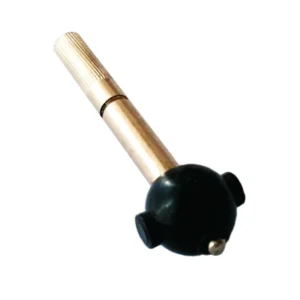Benefit from our overmolding services in China. Worldwide delivery. Cables and connectors overmolding, PCB, metal overmolding, insert molding.
- Cable and connector overmolding
- PCB overmolding (printed circuit boards)
- Insert molding
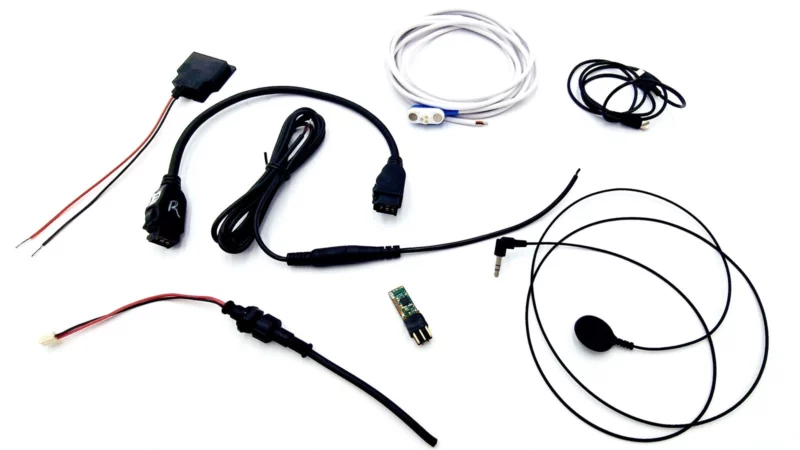
Our Overmolding/Insert Molding Services:
- Connectors: Overmolded electric cables with connectors
- Grommets: Molding grommets and strain relief to electric cables
- Cable splits: Encapsulating split cables
- Insert molding metal contacts
- Molding magnetic connectors
- Insert molding pogo pins
Printed circuit overmolding is a very specific process. It requires experience and the right equipment.
Materials used: TPE, TPU, PP
When it comes to electronics, there are many components that can be overmolded. Overmolding is a process where a material is molded over an existing component, providing additional protection and insulation. It can be a great way to improve the durability and functionality of electronic devices. In this article, we will explore which electronic components are commonly overmolded and the benefits of doing so.
1. Cables and Wires
One of the most common electronic components that are overmolded is cables and wires. Overmolding provides a level of protection that can prevent the wires from breaking, getting damaged or shorting out. The overmolding material used is usually a thermoplastic elastomer (TPE),TPU, PP or silicone, which can provide insulation and protection against environmental factors such as water, heat, and UV rays.
In addition to protection, overmolding can also make the cables and wires more durable. The overmolded material can help to absorb shock, reducing the risk of damage to the wires due to impact or vibration. Furthermore, the overmolded material can improve grip, making it easier to handle the cables and wires.
2. Printed Circuit Boards (PCBs)
Printed circuit boards (PCBs) are another electronic component that is commonly overmolded. PCBs are used to connect electronic components together and provide a platform for them to function. Overmolding can help to protect the PCBs from damage due to environmental factors such as moisture, dust, and heat.
The overmolding material used is usually a two-part liquid silicone rubber (LSR), TPE and TPU because of their lower molding temperature. The material is applied over the PCBs, providing a seal that prevents moisture and dust from getting in. This can help to prevent corrosion and extend the life of the PCBs.
In addition to protection, overmolding can also improve the functionality of PCBs. For example, the overmolded material can be used to create custom shapes and designs that improve the fit and function of the PCBs.
3. Connectors
Another electronic component that is commonly overmolded is a connector . Connectors are used to join two or more electronic components together, allowing them to communicate and function as a system. Overmolding can help to protect the connectors from damage due to environmental factors such as moisture, dust, and heat.
The overmolding material used is usually a Glow Wire Resistant plastic material such as PA66 GF. More specific, the material is applied over the connectors, providing a seal that prevents moisture and dust from getting in. This can help to prevent corrosion and extend the life of the connectors.
In addition to protection, overmolding can also improve the functionality of connectors. For example, the overmolded material can be used to create custom shapes and designs that improve the fit and function of the connectors.
4. Sensors
Sensors are another type of electronic component that is commonly overmolded . To clarify, sensors are used to detect changes in the environment and provide information to electronic systems. Overmolding can help to protect the sensors from damage due to environmental factors such as moisture, dust, and heat.
The overmolding material used is usually a TPE, TPU or silicone. The material is applied over the sensors, providing a seal that prevents moisture and dust from getting in. This can help to prevent corrosion and extend the life of the sensors.
In addition to protection, overmolding can also improve the accuracy and functionality of sensors. For example, the overmolded material can be used to create custom shapes and designs that improve the sensitivity and accuracy of the sensors.
5. Overmolded Metal Components
Insert molding is a different way to describe process of manufacturing overmolded metal components. During this process, a plastic shape is molded over or around a metal part. We use insert molding as a fast and solid assembly solution. The above picture shows a ball shape molded to a metal axle used in a specific type of joysticks. In addition, it is the perfect way to mount threaded metal inserts in a plastic part. Also, connectors are a form of insert molding.
Benefits of Overmolding Electronic Components
There are several benefits to overmolding electronic components. These benefits include:
Protection: Overmolding provides protection against environmental factors such as moisture, dust, and heat. This can help to prevent damage to electronic components
Improved Durability: The overmolded material can help to absorb shock, reducing the risk of damage to the electronic components due to impact or vibration. This can improve the overall durability of the electronic device.
Customization: Overmolding allows for custom shapes and designs to be created, improving the fit and function of electronic components.
Aesthetic Appeal: The overmolded material can also improve the aesthetic appeal of electronic devices, giving them a more professional and finished look.
Reduced Cost: Overmolding can reduce the overall cost of manufacturing electronic devices. By providing protection and durability, electronic devices are less likely to be damaged or break, reducing the need for repairs or replacements.
Conclusion
In conclusion, overmolding is a process that provides protection and durability to electronic components. Cables and wires, printed circuit boards (PCBs), connectors, and sensors are all common electronic components that can be overmolded. With Overmolding we improve the functionality, durability, and aesthetic appeal of electronic devices, while also reducing the overall cost of manufacturing. If you’re looking to improve the durability and functionality of your electronic devices, consider overmolding as a solution.
